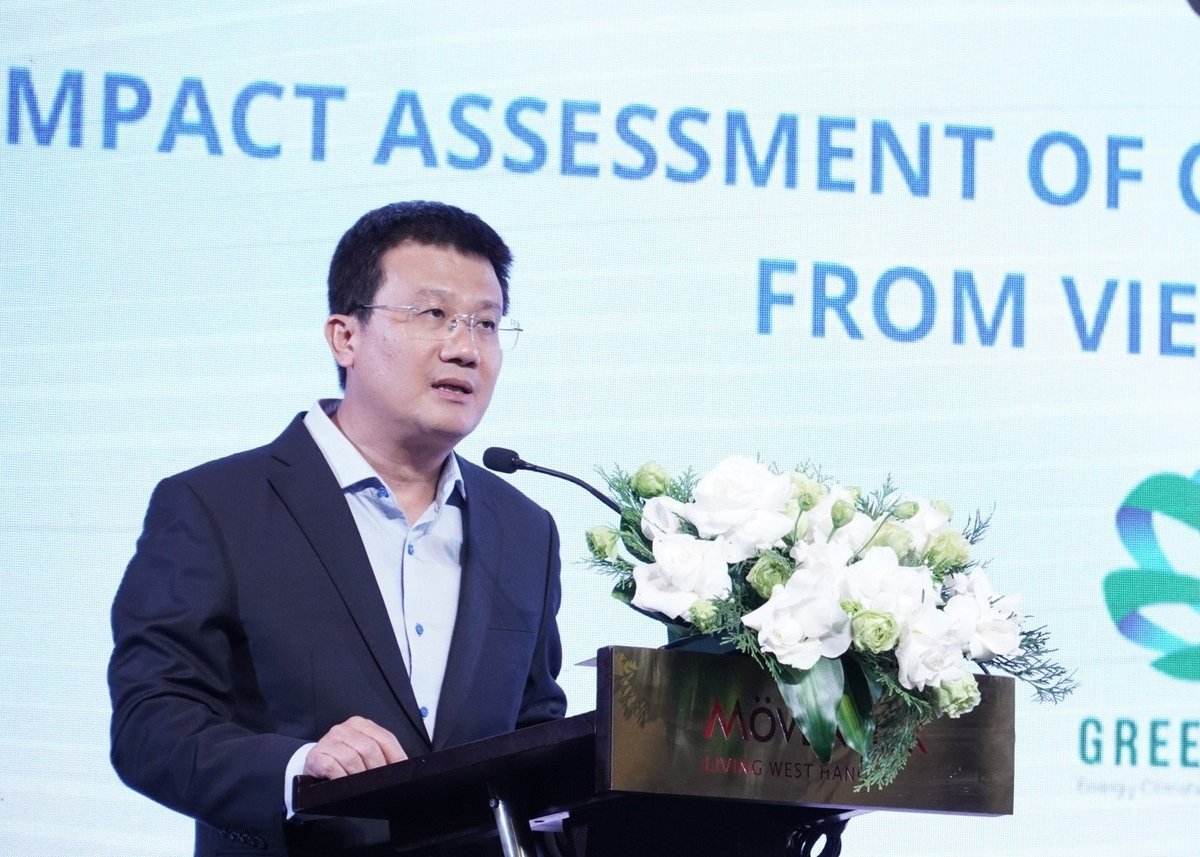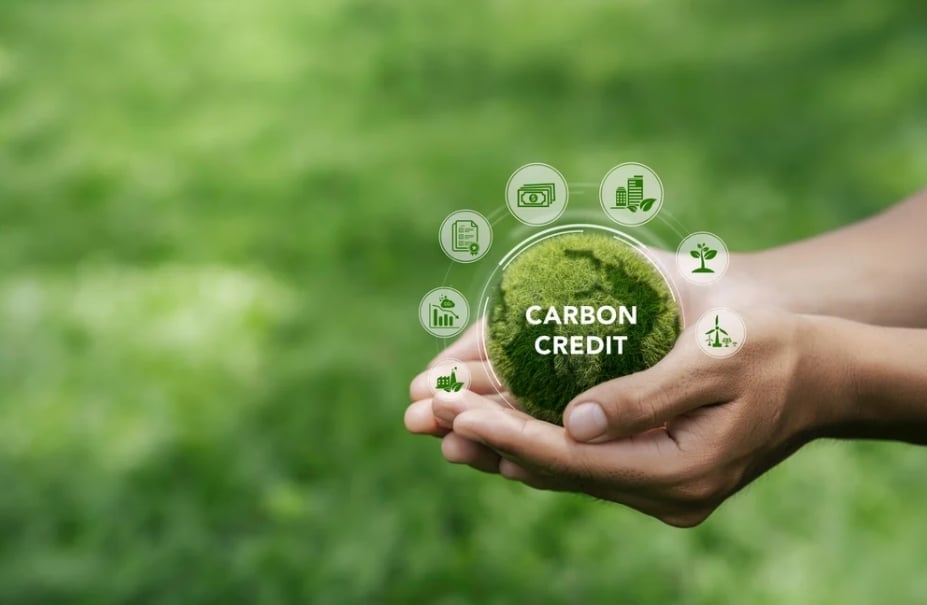November 16, 2025 | 05:59 GMT +7
November 16, 2025 | 05:59 GMT +7
Hotline: 0913.378.918
November 16, 2025 | 05:59 GMT +7
Hotline: 0913.378.918
On August 20, the Southeast Asia Energy Transition Partnership (ETP), in collaboration with the Department of Climate Change under the Ministry of Agriculture and Environment, organized a consultation workshop on “Assessing the impacts of carbon credit trading and mitigation outcomes from Vietnam to international markets.”
Vietnam has chosen the development of a carbon market as one of the key solutions to mitigate greenhouse gas emissions, aiming to meet its 2030 emission reduction targets and realize its commitment to net-zero emissions by 2050.
According to Mr. Nguyen Tuan Quang, Deputy Director General of the Department of Climate Change, Vietnam has promptly built and enacted an essential legal framework. The 2020 Law on Environmental Protection, for the first time, stipulates the "organization and development of the carbon market" under Article 139. Following this, the Government issued Decree No. 06/2022/ND-CP, later revised and supplemented by Decree No. 119/2025/ND-CP. The roadmap provides for a pilot phase of the carbon market until the end of 2028, with official operation beginning in 2029.
In the near future, a carbon registry system and trading platform will serve as the foundation for transactions of greenhouse gas emission allowances and carbon credits. Relevant agencies are already carrying out activities to pilot the carbon trading platform as early as 2025.

Mr. Nguyen Tuan Quang, Deputy Director General of the Department of Climate Change, shares insights on the roadmap for developing Vietnam’s carbon market. Photo: Trung Nguyen.
The Ministry of Agriculture and Environment is taking the lead, in coordination with relevant ministries and agencies, in drafting a Government Decree on the international transfer of greenhouse gas mitigation outcomes and carbon credits, which is expected to be submitted for issuance in 2025. Mr. Quang emphasized that Vietnam’s carbon market is not limited to domestic activities but is also linked to international transactions under Article 6.2 of the Paris Agreement. Therefore, policies must be designed to be both practical and forward-looking.
In recent times, the United Nations Office for Project Services (UNOPS), through the Southeast Asia Energy Transition Partnership (ETP), has provided technical support to the Department of Climate Change in assessing the impacts of the emission allowance and carbon credit trading system in Vietnam. This has served as an important input for the Ministry of Agriculture and Environment to finalize the Government Decree on the international transfer of greenhouse gas mitigation outcomes and carbon credits.
In principle, international transfer of emission reduction outcomes must give priority to serving national objectives in implementing the Nationally Determined Contribution (NDC) and the net-zero commitment, while ensuring compliance with Vietnamese law and the Paris Agreement. Projects must guarantee the quality of credits, outcomes must be registered in the national registry system, and revenues from such exchanges must be managed in accordance with financial regulations.
The Decree will also clarify regulations on corresponding adjustments. When the transferring party (for example, Vietnam) sells mitigation outcomes to a partner country for the purpose of fulfilling its climate commitments, the transferring party must subtract (adjust downward) the amount of transferred reductions from its own national NDC implementation report. Conversely, the purchasing party of carbon credits will add (adjust upward) the acquired mitigation outcomes to its report in order to demonstrate partial fulfillment of its NDC obligations. This mechanism is designed to ensure transparency and to prevent double counting of emission reductions between countries when assessing progress under the Paris Agreement.
The impact assessment of carbon credit trading and mitigation outcomes from Vietnam to international markets was carried out from May 2025 to August 2025. Experts applied modeling and quantitative analysis to provide input for developing management options for carbon credits in Vietnam.
According to Ms. Nguyen Hong Loan, Project Team Leader and Climate Policy Expert at GreenCIC, the study developed and evaluated nine scenarios based on two key factors: the portfolio of eligible activities approved for international transfer, and the proportion of mitigation outcomes to be retained in order to secure Vietnam’s national NDC targets.
On the supply side, the study considered two options: Scenario S20, which allows transactions only from 20 mitigation measures contributing exclusively to the conditional NDC targets; and Scenario S56, which expands eligibility to 56 measures contributing to both conditional and unconditional NDC targets.
Accordingly, the trading caps were set at 90% under Scenario S20, and at two levels: 70% or 50%, under Scenario S56, as a risk management approach to avoid overselling while still safeguarding national NDC goals. Pricing was identified as one of the key factors influencing the impact assessment of these scenarios, with price ranges divided into three categories: high, medium, and low, depending on different groups of buyers. In addition, other critical elements, such as the prioritization of buyer partners, taxation mechanisms, and transaction fees, were also integrated into each scenario.

Approach to assessing the impacts of carbon credit trading and mitigation outcomes from Vietnam to international markets. Photo: Project team.
Regarding the assessment results, Mr. Ho Cong Hoa, Impact Assessment Expert at the Academy of Policy and Development, stated that economic and social benefits are maximized under Scenario S56, which expands the portfolio of eligible measures approved for international transfer. In this scenario, economic gains from carbon credit trading could contribute an average of 0.43% annually to Vietnam’s GDP during 2025–2030, while also stimulating growth in investment, consumption, and employment.
Setting a trading cap is essential to ensure corresponding adjustments under the Paris Agreement and to contribute to Vietnam’s NDC targets. If 50% of credits are retained, Vietnam can secure up to 62% of its unconditional NDC target; whereas retaining 30% would translate into a 37.3% contribution.

Regulations on the trading of mitigation outcomes and carbon credits must comply with international guidelines. Photo: Trung Nguyen.
Experts recommend that Vietnam adopt a phased approach, starting with a cautious trading cap of 50%. As domestic greenhouse gas mitigation capacity is strengthened and confidence in achieving unconditional targets increases, the cap could be raised to 70%, thereby enabling the full realization of conditional NDC targets with international support.
A reasonable transaction fee (around 2%) should be applied to generate additional budget revenue from the carbon market. This revenue should be reinvested in hard-to-abate sectors such as agriculture and forestry to ensure fairness and enhance the overall effectiveness of emission reductions.
At the same time, policies should be considered to encourage businesses to invest in credit-generating measures in priority sectors. This would not only maximize contributions to NDC targets but also mitigate risks related to market price fluctuations, thereby increasing the competitiveness of Vietnam’s carbon credits in the international market.
Translated by Phuong Linh

(VAN) Viet Nam has made significant strides in adapting to climate change, but the progress will remain far from over as long as global temperatures continue to rise.

(VAN) The Ministry of Agriculture and Environment aims for a breakthrough in green growth, digital transformation, climate change adaptation, and a trajectory toward net-zero emissions by 2050.

(VAN) Vietnam’s development orientation for its agriculture and environment sectors toward 2045. shaped by the guiding philosophy of General Secretary To Lam, places people at the core and sustainability at its foundation.
![Clean data - Bright trust: [Part 6] Overcoming data 'gaps'](https://t.ex-cdn.com/nongnghiepmoitruong.vn/608w/files/huytd/2025/11/15/3249-anh-chup-man-hinh-2025-11-14-230516-231344_707.jpeg)
(VAN) Lack of land data in many communes forces Lao Cai province to mobilize all resources, overcome obstacles, and accelerate progress to complete its land database ahead of the assigned deadline.

(VAN) Lam Dong province has surpassed its goal of planting 71 million trees during the 2021-2025 period, reaching more than 113% of the assigned target and mobilizing over VND 408 billion from socialized funding sources.

(VAN) The President of the University of Agriculture and Forestry under Hue University expressed confidence that Vietnam’s agricultural landscape is poised for major breakthroughs, with digital agriculture playing a pivotal, transformative role.

(VAN) The Ministry of Agriculture and Environment has just issued an Action Plan to implement the Project for Low-Emission Crop Production for the 2025-2035 period, with a vision to 2050.